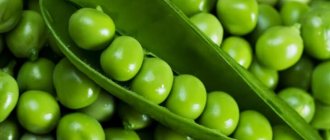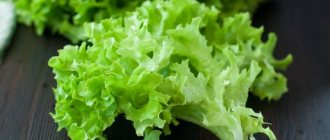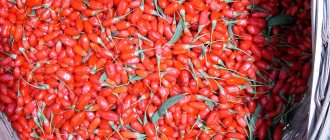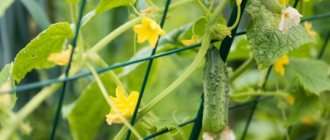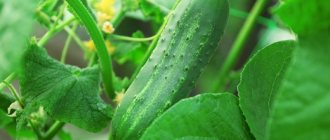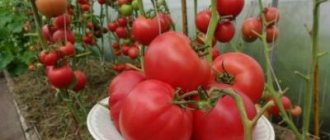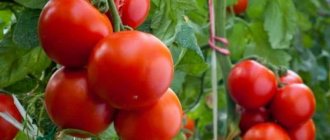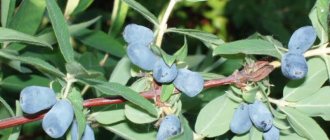The Snowdrop tomato variety can withstand low temperatures and is perfect for all those who live in cold regions of the country. In addition to this amazing quality, the crop is distinguished by its high yield, ability to resist pests and diseases, as well as a unique scope of application of the fruit.
Tomato seeds "Snowdrop"
The bush can produce a maximum of 5 kg of harvest
The fruits are fleshy, weighing up to 200 g each
Origin of the Snowdrop tomato variety
Homeland - Russia, St. Petersburg, agro. The owners of the company started their business by creating a simple laboratory, and now they have a large collection of plants obtained on their own. Today, the company not only creates its own hybrids and varieties, but also cooperates with many foreign breeding organizations.
Scientists conduct their own experiments in the North-West, so almost all varieties are adapted to the harsh cold climate.
The year of creation of the Snowdrop tomato variety was 2002. The plant was included in the state register of breeding works in the same year and designated approved for cultivation throughout Russia. In the southern regions, seeds are immediately sown in the soil, and in the northern regions, seedlings are first grown and then transplanted into greenhouses.
Description of the variety
A low tomato bush produces approximately 1.5 kg of yield per plant. Designed for cultivation in the northern regions of the Russian Federation.
Bushes
The bush is determinant, that is, having reached a certain point in height, it will not grow further. The maximum height of the Snowdrop tomato is 0.6 m. The plant needs pinching and tying.
Fruit
The 1st inflorescence is formed above the 8th leaf, followed by a couple of leaves. About 5 fruits are formed on each brush. In the first inflorescence they are the largest, in the rest they are slightly smaller. Average weight is about 120 g - for tomatoes this is a normal, standard size.
The fruits are rather large, slightly pressed at the poles. Unripe ones have a dark green spot next to the stalk. Ripe tomatoes are bright red in color.
Productivity
The harvest ripens on bushes, with 3 clusters on 1 stem. According to official data, from the 1st quarter. m you can collect about 6 kg of crop.
On average, 1 bush produces at least 1.5 kg of fruit.
As for the ripening time, when sown in mid-spring, flowering occurs in the last week of June. The fruits begin to form by July, and the last harvest is obtained in the second half of August.
Fruit varieties and their quality
This variety is early ripening; tomatoes ripen 80-90 days after sprouting, which is very important for northern regions with short summers. Snowdrop fruits are round, with juicy, fleshy pulp, smooth, crack-resistant skin, and rich red color.
There are 5 pieces in the clusters, weighing 90-150 g - the largest ones grow on the first lower branches; the higher the clusters, the smaller the size of the tomatoes. The taste is pleasant, sugary. Suitable for fresh consumption and canning. The harvest can be stored for a long time.
Advantages and disadvantages of the variety
Summer residents claim that the Snowdrop tomato has no particular disadvantages, it has only advantages.
Advantages of the variety:
- frost resistance;
- high productivity;
- drought resistance;
- strong immunity;
- presentable appearance of the bushes;
- early ripening;
- the fruits do not crack;
- excellent taste;
- long-term storage of crops;
- possibility of transportation;
- does not need large greenhouses; it can get by with a small covering tunnel.
The main disadvantage of the variety is its high demand for fertilizers, especially during the growth period of the bush.
Application of fruits
Snowdrop tomatoes are considered a table variety, so its fruits are used fresh. You can make purees, sauces, adjika, etc. from them. The harvest turns out juicy and tasty. Try canning tomatoes as part of any assorted vegetables. Some housewives try to seal them in the form of lightly salted or sun-dried tomatoes, but the reviews about this preserved Snowdrop are not the best.
Opt for making juice, puree and assorted vegetables.
Snowdrop tomatoes on video
If you grew Snowdrop tomatoes, please write whether you liked them or not. How tall is the bush and what taste are the tomatoes? Would you grow this variety again or recommend it to others? If possible, attach to the comment a photo of the entire bush as a whole or individual fruits that you grew. Thank you!
Your reviews of the Snowdrop tomato and additions to the description will help many gardeners evaluate this variety more objectively and decide whether it is worth planting or not.
This is a natural variety of tomato. Therefore, we recommend taking seeds from a ripe fruit and using them for planting in subsequent seasons.
Growing tomatoes of the Snowdrop variety
Purchasing seedlings on the market from an unverified seller is not the right thing to do. No one can ever guarantee that the sprouts will take root or that the Snowdrop variety will actually grow from them. Perhaps the seller mixed up the seedlings or deliberately sold the wrong one.
Don’t risk buying seedlings – grow them yourself. Only when growing sprouts yourself will you be sure that you will get the desired fruits.
Seed preparation
In order for the seeds to germinate accurately and in the future the seedlings to take root in open soil, the grains must be carefully selected and disinfected.
How to treat seeds:
- Of all the grains that you have, select the best. Make a solution of water (250 ml) and salt (10 g). Place all planting material in this mixture and wait 10 minutes. During this short time, low-quality grains will rise to the top, and good ones, suitable for planting, will sink down.
- Pour out all the water and throw away the bad planting material. Rinse good seeds under running water to remove salt.
- To increase the immunity of future sprouts, keep the seeds in a weak manganese solution for about a quarter of an hour. Some summer residents claim that potassium permanganate can be replaced with aloe juice.
- After pickling, place them in nutrient water for 24 hours. As a useful medium, use any preparations from the store; you can also place the seeds in potato juice.
- It is necessary to improve the germination of grains. To do this, spread a double layer of gauze on a flat dish, place the seeds on top, moisten and make sure they do not dry out. Sprout the grains for 3 days.
- The final stage - hardening - will prepare the seed for transplanting into open soil. Remove the water from the gauze and place the grains in the refrigerator for 12 hours. Take them out and let them warm up, after a while put them back in the refrigerator. Repeat the procedure three times.
Sowing seeds: step-by-step diagram
Plant all seeds at the same time so that the grains grow and develop in the same conditions. Follow these tips:
- Wet the soil a little with water, wait a quarter of an hour and make small furrows of 10 mm in it. Between rows – 40 mm.
- Water the furrows with mullein and water and sow the grains, leaving a distance of 2 cm between them.
- Sprinkle the seed with a little soil and moisten it. Cover the containers with film and place on a warm windowsill.
- Monitor the temperature (+24...+29 degrees Celsius) and humidity (80%).
- Open the film every day for 5 minutes to ventilate the soil and evaporate excess moisture.
- If necessary, moisten the soil with a spray bottle; the seedlings will begin to hatch on the 5th day after planting.
The soil
When creating a substrate for seedlings, more sand is added to it than humus. The mixture is sifted and disinfected. It is better to steam the soil in a double boiler so that all bacteria, fungal spores, etc. are killed. It is better to carry out this procedure a week before planting the grains, so that beneficial bacteria in the soil begin to restore their work.
The soil for seedlings should be loose, but at the same time sufficiently moisture-absorbing. To improve oxygen permeability, add a little sphagnum (moss) to the mixture.
Instead of sphagnum moss, use coconut crumbs.
Tara
Small containers in the form of a simple wooden box with holes in the bottom are suitable for growing tomatoes. The height of the box is 10 cm. Place the boxes in trays so that excess water drains into them. Fill them with a special soil mixture for tomatoes. You can use the following recipe for creating soil: humus (2 parts), peat (2 parts), sand (1 part), superphosphate (10 g per 10 kg) and wood ash (10 g per 10 kg).
Do not use plastic containers; the soil in them begins to suffocate and turn sour very quickly. Better opt for wooden boxes.
Seedling care
The most important thing is to provide the seedlings with plenty of light. If this is not possible in the house, then provide additional lighting (at least 12 hours a day). For the first 7 days, keep the seedlings in extreme humidity, open the film slightly, but do not remove it. Moisten the soil only if it is dry; in other cases, use simple sprays. Protect plants from drafts.
Once every 10 days, water the seedlings with a weak solution of guano or purchased mixtures based on vermicompost. Just reduce the dosage by half.
Picking is mandatory; it should be done on the 10th day after sowing the seeds. Place each plant in a separate small container. Transfer along with a ball of soil so that the roots are not damaged.
Carry out hardening measures 14 days after planting. On the first sunny day, take the cups out into the fresh air and keep them there for about 5 minutes, then increase the “airing” to 3 hours a day.
Rules for planting seedlings in open ground
Immediately pay attention to the composition of the soil. Snowdrop tomatoes do not tolerate clay soils with high acidity. To reduce the amount of acid, add 20 g of wood ash and half as much crushed chalk per 1 kg of soil.
If the seedlings were grown in the last week of February, then you can transplant them into open soil at the end of April. Divide the area for planting into squares of 0.4x0.4 m. Dig holes, put humus on the bottom and fill them with settled water.
Choose a cloudy day for planting. Plants planted in heat and drought take root poorly and, as a result, produce a poor harvest.
When moisture is absorbed into the holes, repeat watering again. Bury the seedlings 40 mm above the root collar, sprinkle the sprouts with soil, and compact them a little. Pour 0.5 liters of warm water under the root of the plant.
How to grow tomatoes
The seedlings are transplanted in early June, when the soil warms up to 15°C. At this point, the bushes have 7-8 true leaves and a well-formed root system.
Landing
A week before transplanting, the soil is dug up and humus or a full range of fertilizers are applied. In open ground, the beds are chosen in a sunny, unshaded place. The depth of the holes is no more than 20 cm. A little wood ash is placed at the bottom of each hole and filled with warm water.
For 1 sq. m place 3-4 plants. If planted more densely, the seedlings will interfere with each other’s ability to properly ventilate and receive sufficient light.
Further care for the Snowdrop tomato
After transplantation, young plants are sprayed with a superphosphate solution. This technique speeds up photosynthesis.
Water the tomato sparingly as the soil dries out. Excessive moisture accumulation will provoke the development of fungal diseases. It is necessary to constantly monitor the humidity level, especially when breeding in a greenhouse. It is here that humidity often exceeds the permissible norm, negatively affecting the development of plants. To reduce humidity levels, the greenhouse is regularly ventilated.
After watering, the soil is loosened and hilled up to improve the air permeability of the soil.
The first fertilizing is applied a week after transplantation. Fertilize with a full complex of minerals. Fertilize the second time during the formation of ovaries. During this period, you can feed with organic matter, for example, bird droppings in a ratio of 1:15.
At the beginning of ripening, plants are fed with phosphorus and potassium for faster fruiting. And during the fruiting period they are fed with nitrogenous substances.
Features of care and possible difficulties
The crop does not require pinching, which significantly facilitates the work of gardeners. But in order to achieve high yields, the stem will have to be formed. Form into three stems, removing all other shoots and lower leaves.
Tall growth requires a mandatory garter, otherwise the stem will not support the weight of the fruit-bearing branches. Wooden stakes or metal rods are installed next to each bush. The stem is fixed almost immediately after planting in the ground, and the branches are fixed as they grow. Loose branches will begin to creep along the ground under the weight of the fruit.
Diseases and pests
In cold climates, the spread of fungal spores is most dangerous. Although the culture has strong immunity, preventive measures should not be neglected.
Prevention includes:
- moderate watering;
- timely feeding;
- systematic loosening;
- cultivation of land with manganese;
- spraying plants with fungicides.
When plants are damaged by fungus, the preparations “Fitosporin” and “HOM” are used.
A thorough inspection of the seedlings will help you notice changes in time and take the necessary measures in a timely manner. At the initial stage of the disease, the crop is much easier to save.
Among the pests for tomatoes, aphids are dangerous. It is combated by treating the stem with a soap solution, which is prepared from 1 piece of laundry soap dissolved in a bucket of warm water.
Bush care
Adult bushes need high-quality and regular care. It consists of several parts:
- Watering. Carry out using the root method. You cannot pour on the leaves, otherwise there will be a risk of fungal diseases. Watering is carried out when the top layer of soil has dried. Transfusions should not be allowed. During heavy rainfall, cover the seedlings with film. During drought, water tomatoes every other day or every day, but in the morning. One young plant requires approximately 2 liters of water, and an adult plant – 4 liters.
- Loosening. This procedure will slow down the evaporation of water from the soil and will prevent the formation of a dry crust on the soil. Do not loosen too deeply, since the roots of the tomatoes are close to the surface.
- Weeding. Do it with loosening, because at this moment the weeds are better pulled out of the ground. It is necessary to destroy the grass, because it is considered a source of pathogenic bacteria and fungi.
- Stepsonning. It is the process of collecting the side shoots of a plant in its lower part, breaking them off manually when the shoots reach 5 cm. The event should be carried out in cloudy and cool weather so that the plant has time to heal its wounds before the heat. After planting the seedlings, carry out the first pinching after 30 days, then every 10 days.
- Garter. Farmers use two types of support: trellises and stakes. The first ones are a mesh with large cells, it is very difficult to tie them to them, but you can lean 5 bushes against the trellis at once. The stakes are driven in near each bush.
- Feeding. Tomatoes are very sensitive to the presence of nutrients in the soil, so they cannot do without applying fertilizers. The first application is carried out 14 days after the sprouts hatch (10 liters of water + 1 kg of mullein + 15 g of superphosphate). One plant uses about 0.5 liters of product. Next feeding after another 14 days (20 g superphosphate + 15 g potassium chloride + 10 l water). Subsequent fertilizers are applied every 20 days; you can use a weak solution of mullein.
Planting and care
With proper hilling, the tomato will form 3 stems. Each of them grows 3 branches. The small height of the bush makes the plant stable;
Although the plant is short, it can break in the wind and under the weight of the branches, so it is unlikely to be possible without tying it up;
Growing tomatoes in a greenhouse
Watering Snowdrops should not be abundant, only in extreme heat. Heavy watering can harm the root system. The harvest is even better the poorer the soil. In these tomatoes, the root penetrates deep into the ground to find moisture;
Plant nutrition is carried out based on the ripening of the fruits. If fertilizing is not carried out on time, the yield and appearance of the plant will suffer. The leaves are just starting to dry out.
During the entire growing period, potash and phosphorus fertilizers must be applied. Only when the fruits begin to swell should nitrogen fertilizers be applied to the bush;
The Snowdrop tomato is a variety that does not require pinching. This technique usually ensures rapid growth and development of the bush. In the case of Snowdrop, this option is simply superfluous.
As you can see, there are no difficulties in caring for Snowdrop tomatoes. With a little work and desire, the enjoyment of pleasant fruits will become a reality.
While watching the video you will learn about caring for tomatoes.
The Snowdrop variety is also rich in healing properties, like other varieties. Thanks to the serotonin included in it, you can improve metabolism and improve your mood.
By consuming tomato fruits, you can achieve a rejuvenating and antitumor effect on the body. They are also an indispensable aid for asthenia, atherosclerosis, and intestinal disorders.
And thanks to the lycopene included in the composition, they have a beneficial effect on the cardiovascular system.
Noticed a mistake? Select it and press Ctrl Enter to let us know.
Attention, super FLIGHT!
Tomato
The main rules for caring for “Snowdrop”:
- Formation. The bushes need partial pinching. Two stems are left in open ground, 3 in a greenhouse;
- Watering. In dry weather, water once every 2 days, in normal weather - 2 times a week;
- Loosening. This is carried out as the soil hardens and weeds grow; it is optimal to loosen it in the interval between waterings;
- Feeding. The first time they are fed with diluted droppings a week after planting. Then - at intervals of 10 days using NPK complexes.
REFERENCE: Plants have a powerful stem and strong branches, so they do not require garter.
If you plan to plant a tomato, the seeds will have to be processed. First, they are disinfected in an intense pink solution of potassium permanganate for 20 minutes. Then they are washed in clean water and placed in a solution of microfertilizers.
The trace element zinc is especially useful for northern tomatoes. You need to purchase zinc sulfate at a seed store and use it according to the instructions on the package. This fertilizer increases yield by 10-20% and reduces the incidence of brown spot.
Treated seeds are sown in seedling boxes. In the future, care for seedlings and seedlings is standard.
The seedlings are transferred to the garden bed when the threat of severe frost has passed. It is necessary to provide for the possibility of covering the seedlings with film in case of cold weather. Before planting, dig up the soil, adding half a bucket of humus per square meter of bed.
An overdose of organic matter prevents tomatoes from setting fruit, which in the short northern summer conditions leads to significant yield loss.
Tomatoes of this variety almost do not need to be watered. Plants use water very sparingly because they have small leaves.
It is better to cut Snowdrop fruits when they are brown, without waiting for them to turn completely red - this allows you to get more tomatoes from each plant.
Mid-season / Mid-season
User rating: 5/5
Early maturing / Medium growing
User rating: 5/5
Medium early / Medium height
Diseases and pests
The Snowdrop tomato is resistant to many diseases and pests, but some ailments still plague it. Main diseases: late blight, blossom end rot, mosaic. To combat them, use special products such as Meteor, Thiophene Extra and Acidan.
Bacterial diseases that cannot be treated are also dangerous. The diseased plants are uprooted and burned.
The most common pests are thrips, whiteflies, wireworms, slugs and mole crickets. Methods to combat them are regular prevention and the use of drugs such as Confidor, Karate, Mospilan.
Reviews about the variety
★★★★★
Maria, 46 years old, journalist, Adler. I recently read an article that describes a seedless method of planting tomatoes.
I immediately remembered how my friend grew the Snowdrop variety by directly planting seeds in open ground. This is really interesting, I think that I should try it too, especially since our climate allows such experiments to be carried out. ★★★★★
Peter, 37 years old, taxi driver, Arkhangelsk. For many years in a row I have been growing Snowdrops in a greenhouse.
What can I say about him? A very productive variety of tomatoes, I harvest about 1.8 kg of harvest from one bush, which is a lot. The only thing is that it needs constant lighting and fertilization; without fertilizing, it begins to get sick and does not bear as much fruit as we would like. Hide
Add your review
The Snowdrop tomato is an excellent variety designed for growing in cold regions. It needs special care, but the juicy and large fruits are worth the time and effort.
0
0
Copy link
Characteristics of the variety
The tomato is one of the most frost-resistant varieties, which are bred specifically for cultivation in difficult climatic conditions. Taking into account its agrotechnical requirements, the harvest can be obtained in open ground and in a greenhouse.
The characteristics of the variety allow seedlings to be planted early, without fear of returning frosts. The main distinguishing feature of the species is its unpretentiousness, since tomato bushes can grow and bear fruit with virtually no participation from the gardener.
Description of the bush
This is a semi-determinate, semi-standard, self-pollinating variety, reaching 120 cm in height. A plant with an erect, flexible stem and fragile, superficial, well-branched root. The aerial root system promotes plant propagation by pinching.
The green mass has large, carved leaves, cut into unequal shares. The inflorescences are pale yellow, the raceme is compact in size.
Description of fruits
Round, slightly flattened Snowdrop tomatoes reach medium size and weigh 100-120 g; at the first harvest, tomatoes weigh 150 g. At the peak of ripeness, they acquire a bright red color. The pulp is sweet, juicy, fleshy and fine-grained. It has 3 seed chambers.
Productivity
An early ripening variety, it bears fruit 80-90 days after the appearance of the first shoots. Due to its resistance to temperature changes, the plant bears fruit abundantly in open ground conditions and heated greenhouses.
A high-yielding tomato variety produces at least 6-7 kg of fruit per bush per season. Under favorable weather conditions and proper care, the yield increases to 10 kg. When planting 4-5 plants per 1 m², the Snowdrop tomato yield is at least 20 kg. These are record high figures for a medium-sized plant.
Resistance to diseases and pests
The description of the variety indicates its resistance to most pathogenic microorganisms that affect nightshade crops. All diseases arise due to non-compliance with the rules of care, especially the watering regime.
The plant is resistant to many types of pests, but there are a number of insects that can damage the bush, so preventive treatments are carried out that increase the immunity of tomatoes and repel pests.
Application area
The increased productivity of tomato crops opens up various possibilities for the use of fruits. The first collection is suitable for preparing salads and vitamin juices. In the future, the ripe fruits can be sent for sale.
Snowdrop tomatoes retain their presentation and taste for a long time, which makes them an ideal option for commercial production.
Fruits collected in the last weeks of the season are canned as a whole, winter salads are prepared from them, and they are processed into ketchup or sauce. Thanks to their thick skin, tomatoes retain their entire appearance in the jar.
Growing regions
The variety is resistant to diseases
The variety of Siberian selection is resistant to frost and poor care. It is actively grown in the central, northern regions and the Urals.
The plant takes root well in cold and temperate latitudes, but the southern climate is destructive for it, since hot summers lead to leaf burns and reduced fruiting.
